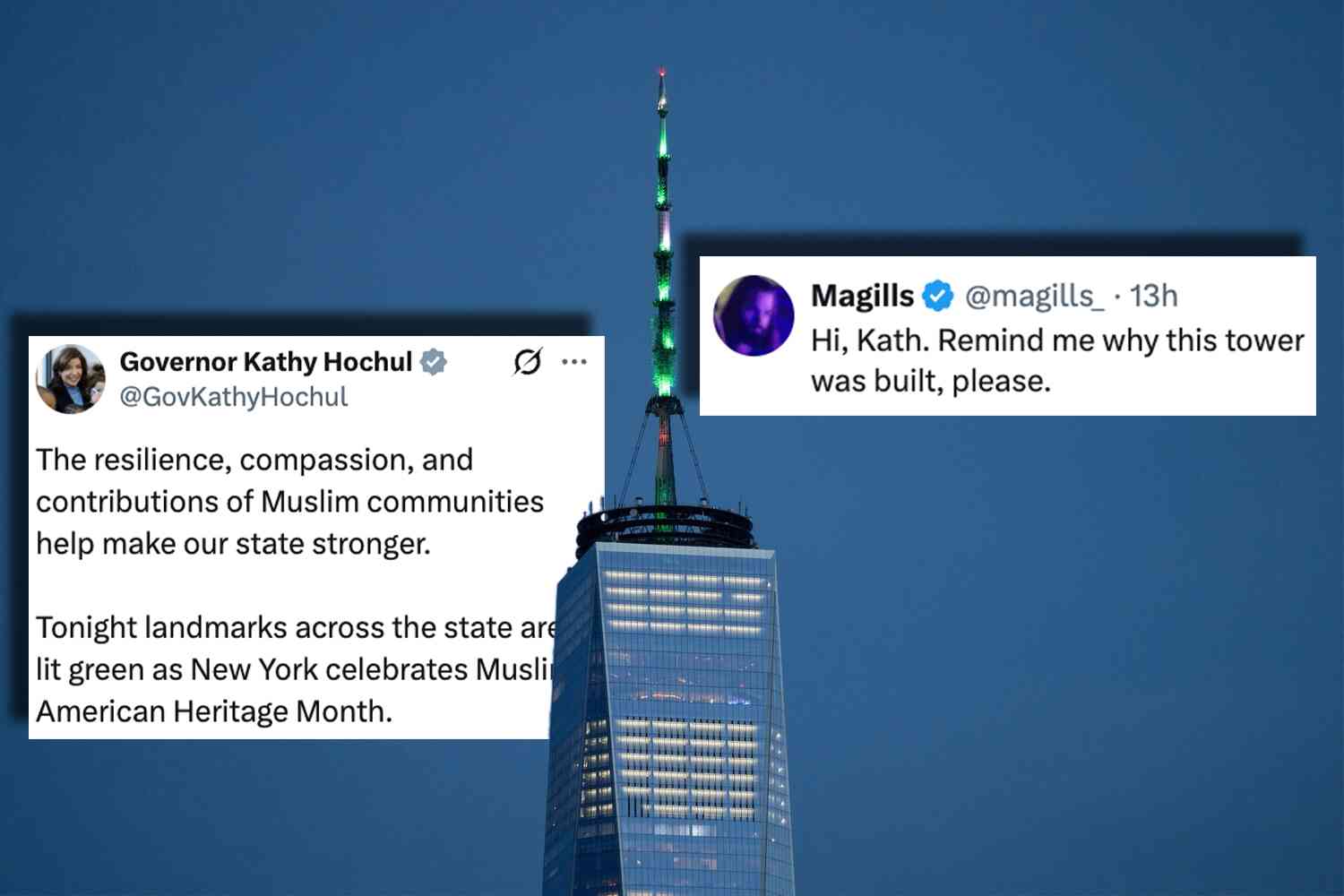A grieving world cries out as if in one voice:
"Why?! Why must our beloved Stumpy die? Why?"
You know why.
Fans are flocking to the see the lone specimen that skyrocketed to fame on the internet before it's chopped down because of climate change.
And not just Stumpy, over 150 other cherry trees must go as well.
It often takes a seminal event to galvanize public attention. Sometimes it's terrorism. Sometimes it's tragedy. And other times it's landscaping.
We are reliably informed by our media that the love for Stumpy knows no bounds.
As the Washingtonian describes it in a headline, "People Can't Get Enough 'Stumpy.'"
They also refer to it as "DC's Most Beloved Tree," further writing that,
The Tidal Basin's scrawniest cherry tree is stealing — and breaking — hearts.
USA Today even published a link to a petition in a very similar piece.
Amanda Rhodes, 31, is the author of a Change.org petition calling on authorities to "reconsider their decision to cut down 'Stumpy' - the cherished 'little tree that could.'"
And in a narrative two-fer, NPR refers to Stumpy as both "cherished" and "beloved" (no, multiple media sources all parroting the same words and same themes is absolutely not a sign of a hive-mind approach to news coverage, why do you ask?).
I had no choice, I had to go see Stumpy for myself.
But first, a little background on Washington DC's famous cherry trees.
In 1910, the city of Tokyo shipped two thousand of the cherry trees to Washington DC as a gift of friendship.
Residents gratefully accepted the generous donation and in a gesture of goodwill, burned them all to the ground.
In fairness, the trees were infested with insects that were in no way intended to imperil the American agricultural sector, crippling the economy, and thus securing for generations, Japanese dominance in refusing to cook seafood.
A second batch of non-agriculture-destroying trees was sent in 1912, which were then planted in and around the Tidal Basin upon which the Jefferson Memorial sits, blooming in spectacular fashion every spring and attracting visitors from around the world for its famous "National Cherry Blossom Festival."
Stumpy would have been to the right of this photo. (Apologies for the picture quality, this was taken with a smartphone so old and clunky that most American children were not yet suffering from widespread depression which 100% is not caused by smartphones just in case you were wondering.)
As for Stumpy, he came to fame on social media during 2020. I'm not going to elaborate too much on how this sad, but admittedly spunky tree captured the imagination of a nation other than to point out two things:
Finally, before we get to how the beloved and cherished and also cherished and beloved Stumpy is imperiled by your SUV and refusal to eat bugs for dinner, let's see if we can't wade through the crowds to get a glimpse of him.
As I approached his location on a sunny if brisk late-April afternoon, just south of the Jefferson Memorial as you walk the perimeter of the Tidal Basin, I braced myself to be enveloped by throngs of fanatical Stumpy supporters.
Okay, so maybe "throngs" was a poor choice of words.
I went to get a closer look. Perhaps there were some people chained to it or gluing themselves to its trunk or something.
I'm sure they were all just off fighting climate change in more effective ways like destroying our shared cultural heritage.
Sure, this was a weekday and all, but buses were still disgorging their loads of tourists and school groups, but in my 20 or so minutes there, not a one came by to pay their respects to the beloved and cherished cherry tree that was breaking hearts. They seemed more interested in the geese.
These geese are, unsurprisingly, all over the perimeter of the Tidal Basin. I noticed more than once that when tourists would come across them lingering on the side walk, they'd wait, like they didn't want to disturb them. That, or they knew these were tough city geese and would kill you as soon as look at you. I'd pass by the tourists and walk right by the geese who barely gave me a second look. Even the ones with babies were unruffled by my presence having long grown accustomed to the attention.
The tourists would then follow me, comfortable in the knowledge that it was safe. Sure, one of them, probably a weak, slow one, was immediately set upon by a pack of hungry geese and was devoured on site within minutes as others looked on in horror.
I'm kidding of course! Those blood-curdling screams could have been anything.
As for Stumpy, with its iconic blossoms gone for over a month, it sat largely alone, most of its brothers and sisters having long perished from the scourges of climate change.
As NBC News put it,
Arborists say Stumpy's interior trunk is hollow, reason enough to place it among 158 trees scheduled to be cut down in coming months as part of a $113 million sea wall repair project near the National Mall prompted by climate change.
Mike Litterst, a park service spokesman noted,
At this point, it's almost literally nothing more than bark and a few branches on top.
Or, put more colorfully,
'[It's] dead on the inside and alive on the outside,' tourist Amanda Lawson said with a laugh.
Should you ever have Amanda Lawson over as a house guest, I would suggest you keep your bedroom door locked at night.
Incidentally, just a little ways down from Stumpy was a tree in very similar condition.
Why does Stumpy get all the press while this guy dwells in obscurity, like the Andrew Ridgeley of cherry trees?
Stumpy, hollow though he may be, knew the importance of putting together the right media team.
Let's leave climate change out of it for a moment and focus on why Stumpy and these others are dead or dying.
The problem is that since the Tidal Basin is, literally, a tidal basin, it is subject to high and low tides. In the area where Stumpy sits, the high tides wash over onto the land thus inundating the trees' roots with water, something cherry trees in particular don't tolerate well. You may have already noticed the remnants of the most recent high tide in earlier pictures. Here is a shot looking back up north from Stumpy towards the Washington Monument with the Jefferson Memorial off to the right:
At high tide, this whole area, including Stumpy, is essentially under water. This is why it is so barren of cherry trees and why Stumpy is in such bad shape.
As for climate change causing the problem, we know that to be true because we've been told to believe it so shut up already.
They don't even try to offer any evidence, just assertions. As you've likely already noticed, the NBC article I started with is littered with such statements:
... before it's chopped down because of climate change.
... part of a $113 million sea wall repair project near the National Mall prompted by climate change.
[Litterst] said Stumpy's condition is a direct result of climate change ...
I can never tell whether it's ignorance or arrogance, but these stories always include just enough facts to betray to the careful reader that the claims being made are false, and often comically so.
Back to the NBC piece.
Stumpy and the others are poised for a takedown because parts of the sea walls along the west Potomac River and the Tidal Basin, a manmade reservoir near the National Mall, have settled 5 feet since they were built in the late 1800s and the early 1900s, according to the park service. Several factors are contributing to the deterioration, including age, poor drainage and rising sea levels.
Interesting. The sea wall is five feet lower than it used to be. Because of rising sea levels, a favorite boogeyman of climate alarmists?
Not if you show a glimmer of curiosity, a trait that used to separate the journalists from the scribes.
It took me all of five minutes to find this piece in The Washington Post, published in 2022, in which it was noted in discussing a similar repair done along the Jefferson Memorial itself:
The sinking section at the Jefferson Memorial was believed to have failed because it was built on a foundation of wooden pillars that were not long enough to reach bedrock. The old foundation was replaced with concrete pilings and caissons resting on bedrock.
According to our friend, Litterst, they're dealing with the same thing all along the decaying seawall.
Litterst said he thinks the same process would be used this time.
So, rising sea levels did not cause the problem.
Structurally unsound foundations were the problem.
So much for that argument, such as it was!
What about the rising sea level, that is playing a much larger role, right?!
This is also something that takes about five minutes to look up. According to the National Park Service,
Over the approximately 100 years on record, sea level has risen 344mm (13.5 inches).
Now, I'm no math genius, but I'm pretty sure five feet is significantly more than one foot, meaning that claiming climate change is killing Stumpy is simply a lie.
Or, a blow against white supremacy.
Of course, climate hysterics became self-parodies some time ago, a recent example being this real-life Babylon Bee headline.
And then there's this, an actual article published by MSNBC in support of destroying priceless works of art in the name of lunacy.
As maddening as these are, they both at least have a fig leaf of deniability in that they are opinion pieces with gauzy perceptions subject to interpretation.
But there's something about the in-your-face demonstrably untrue claims as embodied in the Stumpy narrative that make them worse.
It's not complicated and it's not opinion, it's arithmetic. It's 1984's four-fingers test. It's a bald-faced lie that we are being told to believe, and we're being told this with such insouciance because it's the same thing they've been getting away with for decades.
It's also why we can't have adult conversations about these things, because an adult conversation would quickly expose it all as hysterics dressed up as nobility and conjecture dressed up as facts.
That's why Bjorn Lomborg, who believes in anthropogenic global warming, that human behavior is causing climate change, is still considered a "climate denier" and a threat to the narrative. The fact that it's not the climate he's denying tells you everything. What he's denying is that the best solution, no, the only solution, is to create a global socialist state ruled over by billionaire oligarchs and agreeable politicians.
But, the narrative is breaking down and people are growing tired and skeptical of claims that fail to come true, and the growing realization that every solution proffered by our betters just happens to award them more power and the rest of us, less.
No less trustworthy a mouthpiece for the global elite than the New York Times has announced the pivot, if a small one.
Climate Doom Is Out. ‘Apocalyptic Optimism' Is In.
Focusing on disaster hasn't changed the planet's trajectory. Will a more upbeat approach show a way forward?
You'll still be forced to eat bugs, but with a smile.
(You have to admire their fortitude.)
Kind of like Stumpy, the hysterical climate narrative has stood long past the time it should have collapsed under the weight of its hollow platitudes, and yet here it still stands, against all odds.
Until someone shows up with a chainsaw.
P.S. Now check out our latest video 👇
Disclaimer: The opinions expressed in this article are those of the author and do not necessarily reflect the opinions of Not the Bee or any of its affiliates.









